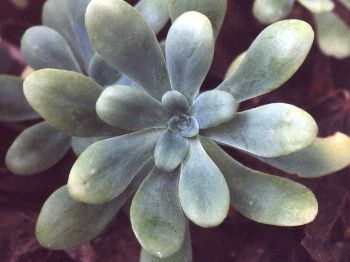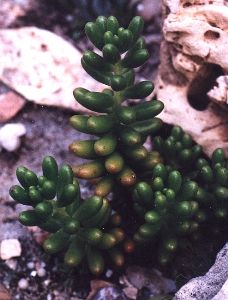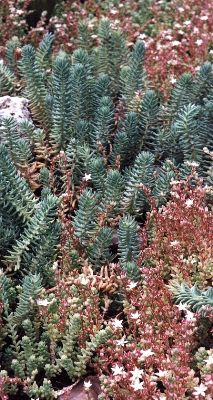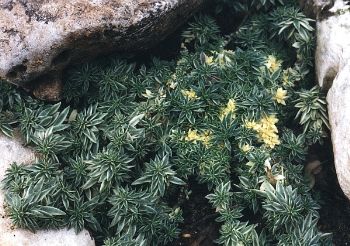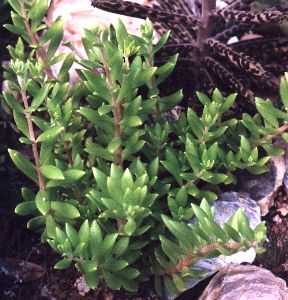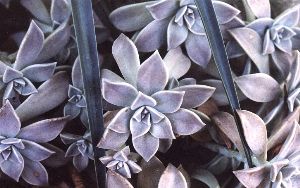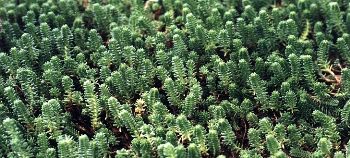Sedum
by Valerie (May 24, 2001)
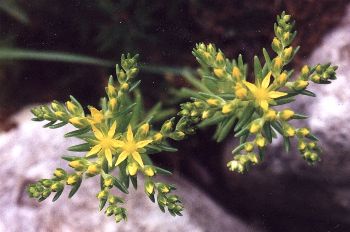
With a hot, dry climate, one of the most successful ground covers we grow is sedum. There are many different species, ranging from completely freeze tolerant to those that die at the first hint of cold weather, and, of course, they are not the sort of plants one can walk on. As their common name of stonecrop suggests, they do very well in rocky areas, surviving on little soil and storing water in their thick leaves. While some do well in very sunny areas, others thrive in shade and they all tend to like good drainage. We grow about a dozen species of sedum but identifying them has been a struggle. Frequently, I can only determine what a particular plant is not. 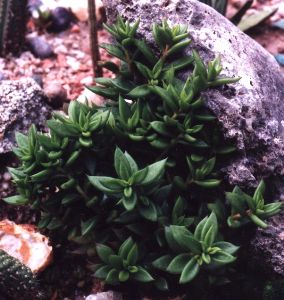 Sedums are very easy to propagate as almost any tiny leaf or piece of stem that touches the ground will root. Some types become rather invasive but are easy to control since the roots are never very deep. The only species which has gotten out of hand is the one pictured at right. This plant will freeze but if it remains above 32° every little leaf and seed will sprout, forming a dense ground covering. Although the plant pictured here is green, the tiny sprouts are orange, acquiring their green color with age. The plant is also very brittle and falls apart at the slightest touch so removing it is not always a successful venture.
The foliage of sedums can be light silvery gray, bright green, dark green, bluish or even red. This can vary depending on the amount of sun or the coolness of the temperatures. Sedums have small, 5-pointed flowers, varying from white to bright yellow. There are some species with red or pink flowers but they have never grown well for us. Most species seem to bloom in the spring, and at least one native type with very tiny bead-like leaves blooms then completely dies back as soon as it gets hot. We have one larger species, pictured at left, that blooms during the winter.
The sedum at left has the colorful name of "pork and beans" (Sedum rubrotinctum). It is very frost tender Mexican native and survives for us in an area that is covered during the winter. It seems to dislike both cold and high heat.
The two sedums pictured at right are very common in gardens in this area. The smaller species has white flowers and blooms quite frequently after good rains. The larger, bluish-green plants (possibly Sedum forsterianum) hardly ever blooms, but takes the heat very well and is a more substantial plant than most of the small ground covers.
There is one variegated species (see photo at left) that we have had for a number of years, but it doesn't do very well in any of the areas I've put it. Although it seemed to thrive in a shady place for awhile, it was soon overtaken by more aggressive plants. Moving some of it to a drier sunny area has produced bigger stems and leaves, but fewer of them. This species has yellow blossoms.
I don't hesitate to experiment with plants from other parts of the country, especially if they are acquired for free. The sedum in the photo at right is from northern Wisconsin, where it grew in huge mats on rocky garden areas. It does not grow so profusely here but does pretty well for such a climate change. I actually brought back several types of sedum from a Zone 3 location and all have at least survived.
|
